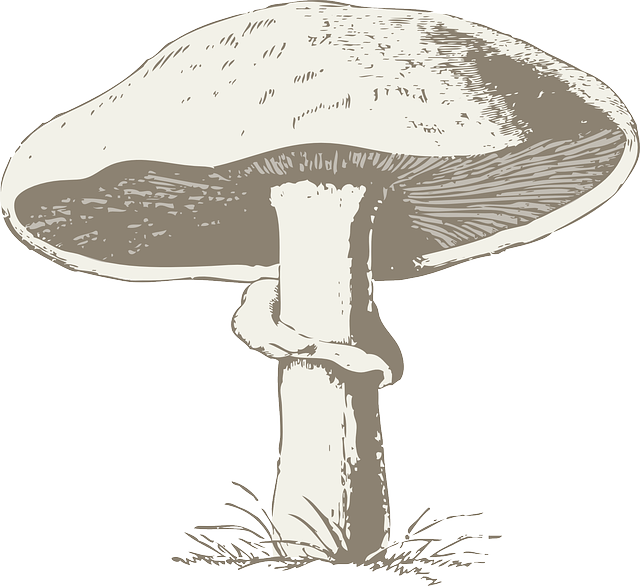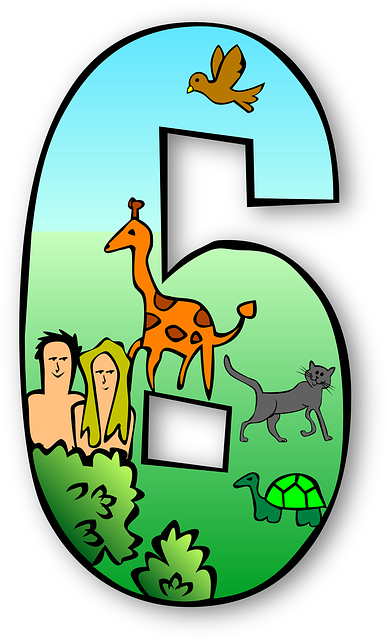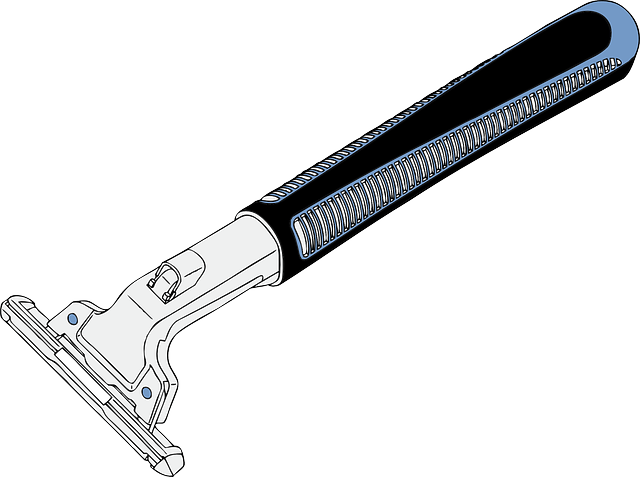فهم الأنساب الوراثي
فهم الأنساب الوراثي أوفهم الأنساب الجيني Genetic genealogy، هوتطبيق المورثات في فهم الأنساب التقليدي. يضم فهم الأنساب الوراثي استخدام إختبار الحمض النووي للأنساب لتحديد مستوى ونوع علاقات النسب بين الأفراد. هذا التطبيق للمورثات أصبح شائعاً لتأريخ العائلات في الحقبة الأولى من القرن 21، كما أصبحت الاختبارات بأسعار معقولة. قام مجموعة من الهواة بالترويج لهذه الإختبارات، مثل مجموعات دراسة الألقاب، أوجماعات الأنساب المحلية، وكذلك المشروعات البحثية مثل المشروع الجينوگرافي. في 2013 أُجري الإختبار على مئات الآلاف من الأشخاص. كمجال تحت التطوير، يهدف الممارسون إلى توسيعه، بعد مطالبة الأفراد بفهم أصولهم قبل القرون الأخيرة والأنساب التقليدية التي يمكن بناؤها.
التاريخ
قد يرجع استقصاء الألقاب في فهم الوراثة إلى جورج داروين، ابن تشارلز داروين. عام 1875، استخدم جورج داروين الألقاب لتقدير تواتر زيجات ابن العم الأول وحسب المدى المتسقط لحدوث الزواج بين الأشخاص الحاملين لنفس اللقب (isonymy). وصل داروين إلى حتى الرقم بين 2.25% و4.5% لوقوع زواج أبناء العم بين السكان في بريطانيا العظمى، وارتفع الرقم بين الطبقات العليا والسفلى بين سكان الريف بصفة عامة.
فهم الأنساب الوراثي السكاني
Origin of peoples in a context of DNA genealogy is an assignment of each of them to a particular tribe or its branch (lineage) initiated in a genealogical sense by a particular ancestor who had a base (“ancestral”) haplotype. This also includes an estimation of a time span between the common ancestor and its current descendants. If information obtained this way can be presented in a historical context and supported, even arguably, by other independent archeological, linguistic, historical, ethnographic, anthropological and other related considerations, this can be called a success. Just in the last 20 years scientists began to use Y-Chromosome markers and Mt-Chromosome markers, to provide evidence of common ancestry between individuals with a tradition of common ancestry. Two notable studies showed common heritage between men from Cohen Jewish lineages and by proxy Abraham Modal Haplotype/lineage.
دراسات الألقاب
One famous study examined the lineage of descendants of Thomas Jefferson’s paternal line and male lineage descendants of the freed slave, Sally Hemmings.
Bryan Sykes, a molecular biologist at Oxford University tested the new methodology in general surname research. His study of the Sykes surname obtained results by looking at four STR markers on the male chromosome. It pointed the way to genetics becoming a valuable assistant in the service of genealogy and history.
إجراء إختبارات الأبوة
The first company to provide direct-to-consumer genetic DNA testing was the now defunct GeneTree. However, it did not offer multi-generational genealogy tests. In fall 2001, GeneTree sold its assets to Salt Lake City-based Sorenson Molecular Genealogy Foundation (SMGF) which originated in 1999. While in operation, SMGF provided free Y-Chromosome and mitochondrial DNA tests to thousands. Later, GeneTree returned to genetic testing for genealogy in conjunction with the Sorenson parent company and eventually was part of the assets acquired in the Ancestry.com buyout of SMGF.
ثورة فهم الأنساب الوراثي
In 2000, Family Tree DNA, founded by Bennett Greenspan and Max Blankfeld, was the first company dedicated to direct-to-consumer testing for genealogy research. They initially offered eleven marker Y-Chromosome STR tests and HVR1 mitochondrial DNA tests. They originally tested in partnership with the University of Arizona.
The publication of Sykes The Seven Daughters of Eve in 2001, which described the seven major haplogroups of European ancestors, helped push personal ancestry testing through DNA tests into wide public notice. With the growing availability and affordability of genealogical DNA testing, genetic genealogy as a field grew rapidly. By 2003, the field of DNA testing of surnames was declared officially to have “arrived” in an article by Jobling and Tyler-Smith in Nature Reviews Genetics. The number of firms offering tests, and the number of consumers ordering them, rose dramatically.
المشروع الجينوگرافي
The original Genographic Project was a five-year research study launched in 2005 by the National Geographic Society and IBM, in partnership with the University of Arizona and Family Tree DNA. Its goals were primarily anthropological. The project announced that by April 2010 it had sold more than 350,000 of its public participation testing kits, which test the general public for either twelve STR markers on the Y-Chromosome or mutations on the HVR1 region of the mtDNA.
In 2007, annual sales of genetic genealogical tests for all companies, including the laboratories that support them, were estimated to be in the area of $60 million (2006).
العملاء التقليديون والجماعات المهتمة
The earliest test takers were customers most often those who started with a Y-Chromosome test to determine their father's paternal ancestry. These men often took part in surname projects. The first phase of the Genographic project brought new participants into genetic genealogy. Those who tested were as likely to be interested in direct maternal heritage as their paternal. The number of those taking mtDNA tests increased. The introduction of autosomal SNP tests based on microarray chip technology changed the demographics. Women were as likely as men to test themselves. Further, Ancestry.com's simplification of matching brought a larger number of test takers, though the validity of their DNA matching and accompanying genealogy pairing were questioned.[]
علوم المواطن والجمعية الدولية للأنساب
Members of the growing genetic genealogy community have been credited with making useful contributions to knowledge in the field.
One of the earliest interest groups to emerge was the International Society of Genetic Genealogy (ISOGG). Their stated goal is to promote DNA testing for genealogy. Members advocate the use of genetics in genealogical research and the group facilitates networking among genetic genealogists. Since 2006 ISOGG has maintained the regularly updated ISOGG Y-chromosome phylogenetic tree. ISOGG aims to keep the tree as up-to-date as possible, incorporating new SNPs. The tree has been described by academics as providing the accepted nomenclature for human Y-chromosome DNA haplogroups and subclades, and being "one of the most up-to-date, if not completely academically verified, phylogenetic trees of Y chromosome haplogroups".
الاستخدامات
الحمض النووي للمتقدرات والأنساب الأمومية المباشرة
mtDNA testing involves sequencing or testing the parts of the hypervariable region (HVR1 or HVR2) or the complete mitochondrial genome (mtGenome). An mtDNA test that only tests part of the hypervariable region may also include the additional SNPs needed to assign people to a maternal haplogroup.
الأنساب الأبوية المباشرة
Y-Chromosome DNA (Y-DNA) testing involves short tandem repeat (STR) and, sometimes, single nucleotide polymorphism (SNP) testing of the Y-Chromosome. The Y-Chromosome is present only in males and reveals information strictly on the paternal line. These tests can provide insight into the recent (via STRs) and ancient (via SNPs) genetic ancestry. A Y-chromosome STR test will reveal a haplotype, which should be similar among all male descendants of a male ancestor. SNP tests are used to assign people to a paternal haplogroup, which defines a much larger genetic population.
الأصول الجغرافية الحيوية والعرقية
تجرى إختبارات الحمض النووي الإضافية لتحديد الأصل الجغرافي الحيوي والعرقي، لكن هذه الإختبارات لها أهمية أقل لفهم الأنساب التقليدي.
كشف فهم الأنساب الوراثي الروابط بين الشعوب التي كانت تبدوليس بينها أي علاقة. على سبيل المثال الشعوب الفينيقية القديمة هم أجداد لسكان ما يعهد اليوم بجزيرة مالطة. النتائج الأولية للدراسة التي أجراها پيير زالوعة من الجامعة الأمريكية في بيروت وسپنسر ويلز والتي نشرت في عدد أكتوبر 2004 من ناشيونال جيوگرافيك. وكان أحد الاستنتاجات التي توصلت إليها الدراسة هي حتى "أكثر من نصف الأنساب الحاملة لكروموسوم واي والتي نراها في السكان المالطيين المعاصرين قد يرجع نسبهم إلى الفينيقيين".
الهجرة البشرية
تستخدم حالياً إختبار الحمض النووي للأنساب على نطاق زمني واسع لتتبع نماذج الهجرة البشرية. على سبيل المثال، تحدد هذه الإختبارات متى أتى أول البشر إلى أمريكا الشمالية وما المسار الذي إتبعوه.
لسنوات عديدة، أخذ الباحثون والمعمليون حول العالم عينات من السكان الأصليين في محاولة لرسم خريطة لنماذج الهجرة البشرية. المشروع الجينوگرافي التابع للجمعية الجغرافية الوطنية يهدف إلى رسم خريطة لنماذج الهجرة البشرية عن طريق جمع وتحليل عينات الحمض النووي لأكثر من 100.000 إنسان عبر القارات الخمسة. تحليل الأنساب الوراثية لعشائر الحمض النووي يقيس الاتصالات الوراثية الدقيقة للشخص مع الجماعة العرقية الأصلية حول العالم.
انظر أيضاً
- أليل
- تردد أليل
- Citizen science
- Electropherogram
- اسم العائلة
- إختبار الحمض النووي للأنساب
- فهم الأنساب
- Genetic recombination
- Haplogroup
- Haplotype
- Human mitochondrial DNA haplogroups
- Human Y-chromosome DNA haplogroups
- Human mitochondrial genetics
- Human genetic clustering
- Most recent common ancestor
- Short tandem repeat (STR)
- Single nucleotide polymorphism (SNP)
- Y-STR (Y-chromosome short tandem repeat)
- Y-chromosome haplogroups by populations
- Non-paternity event
المصادر
-
^ Darwin, George H. (Sep., 1875). "Note on the Marriages of First Cousins". Journal of the Statistical Society of London. 38 (3): 344–348. doi:10.2307/2338771. Check date values in:
|date=(help) - ^ Klyosov, Anatole. "DNA Genealogy, Mutation Rates, and Some Historical Evidences Written in Y-Chromosome. I. Basic Principles and the Method" (PDF). Russian Peoceedings in Nature.
- ^ Skorecki, Karl; Selig, Sara; Blazer, Shraga; Bradman, Robert; Bradman, Neil; Waburton, P. J.; Ismajlowicz, Monica; Hammer, Michael F. (1 January 1997). "Y chromosomes of Jewish priests". Nature. 385 (6611): 32. doi:10.1038/385032a0. PMID 8985243.
- ^ Klyosov, Anatoly (2009). "DNA Genealogy, Mutation Rates, and Some Historical Evidence Written in Y-Chromosome, Part II: Walking the Map". Journal of Genetiv Genealogy. 5 (2). ISSN 1557-3796. Retrieved June 29, 2013.
- ^ 27 January 2012 – 14 October 2012, Smithsonian Institution, accessed 23 March 2012. Quote: "The [DNA test results show a genetic link between the Jefferson and Hemings descendants: A man with the Jefferson Y chromosome fathered Eston Hemings (born 1808). While there were other adult males with the Jefferson Y chromosome living in Virginia at that time, most historians now believe that the documentary and genetic evidence, considered together, strongly support the conclusion that [Thomas] Jefferson was the father of Sally Hemings's children."
- ^ Sykes, Bryan; Irven, Catherine (2000). "Surnames and the Y Chromosome". The American Journal of Human Genetics. 66 (4): 1417. doi:10.1086/302850.
- ^ "CMMG alum launches multi-million dollar genetic testing company - Alum notes" (PDF). 17 (2). Wayne State University, School of Medicine's alumni journal. Spring 2006: 1. Retrieved 24 Jan 2013.
- ^ "How Big Is the Genetic Genealogy Market?". The Genetic Genealogist. Retrieved 19 Feb 2009.
- ^ "Ancestry.com Launches new AncestryDNA Service: The Next Generation of DNA Science Poised to Enrich Family History Research" (Press release). Retrieved 1 July 2013.
-
^ Belli, Anne (January 18, 2005). "Moneymakers: Bennett Greenspan". Houston Chronicle. Retrieved June 14, 2013.
Years of researching his family tree through records and documents revealed roots in Argentina, but he ran out of leads looking for his maternal great-grandfather. After hearing about new genetic testing at the University of Arizona, he persuaded a scientist there to test DNA samples from a known cousin in California and a suspected distant cousin in Buenos Aires. It was a match. But the real find was the idea for Family Tree DNA, which the former film salesman launched in early 2000 to provide the same kind of service for others searching for their ancestors.
-
^ "National Genealogical Society Quarterly". 93 (1–4). National Genealogical Society. 2005: 248.
Businessman Bennett Greenspan hoped that the approach used in the Jefferson and Cohen research would help family historians. After reaching a brick wall on his mother's surname, Nitz, he discovered and Argentine researching the same surname. Greenspan enlisted the help of a male Nitz cousin. A scientist involved in the original Cohen investigation tested the Argentine's and Greenspan's cousin's Y chromosomes. Their haplotypes matched perfectly.
-
^ Lomax, John Nova (April 14, 2005). "Who's Your Daddy?". Houston Press. Retrieved June 14, 2013.
A real estate developer and entrepreneur, Greenspan has been interested in genealogy since his preteen days.
- ^ Capper, Russ (November 15, 2008). "Bennett Greenspan of FamilyTreeDNA.com". The BusinessMakers Radio Show. Retrieved June 14, 2013.
-
^ Dardashti, Schelly Talalay (March 30, 2008). "When oral history meets genetics". The Jerusalem Post. Retrieved June 14, 2013.
Greenspan, born and raised in Omaha, Nebraska, has been interested in genealogy from a very young age; he drew his first family tree at age 11.
- ^ Gibbens, Pam (April 2006). "Talk of The Town – At Familytree DNA, it's all Relative". Greater Houston Weekly / Houston Chronicle. Retrieved February 15, 2012.
- ^ Bradford, Nicole (24 Feb 2008). ". Houston Business Journal. Retrieved 19 June 2013.
- ^ Jobling, Mark A.; Tyler-Smith, Chris (2003). "The human Y chromosome: An evolutionary marker comes of age". Nature Reviews Genetics. 4 (8): 598–612. doi:10.1038/nrg1124. PMID 12897772.
- ^ Deboeck, Guido. "Genetic Genealogy Becomes Mainstream". BellaOnline. Retrieved 19 Feb 2009.
- ^ "The Genographic Project: A Landmark Study of the Human Journey". National Geographic. Retrieved 19 Feb 2009.
- ^ Redmonds, George (2011). . Oxford: Oxford University Press. p. 196. ISBN .
The growth of interest in genetic genealogy has inspired a group of individuals outside the academic area who are passionate about the subject and who have an impressive grasp of the research issues. Two focal points for this group are the International Society of Genetic Genealogy and the Journal of Genetic Genealogy. The ISOGG is a non-profit, non-commercial organization that provides resources and maintains one of the most up-to-date, if not completely academically verified, phylogenetic trees of Y chromosome haplogroups.
Unknown parameter|coauthors=ignored (|author=suggested) (help) - ^ "The International Society of Genetic Genealogy". Retrieved July 1, 2013.
- ^ King, TE (2009). "What's in a name? Y chromosomes, surnames and the genetic genealogy revolution". Trends in Genetics. 25 (8): 351–360. doi:10.1016/j.tig.2009.06.003. Unknown parameter
|coauthors=ignored (|author=suggested) (help) -
^ International Society of Genetic Genealogy (2006)). "Y-DNA Haplogroup Tree 2006, Version: 1.24, Date:سبعة June 2007". Retrieved 1 July 2013. Check date values in:
|year=(help) -
^ Athey, Whit (2008). "Editor's Corner: A New Y-Chromosome Phylogenetic Tree" (PDF). Journal of Genetic Genealogy. 4 (1): i–ii. Retrieved July 8, 2013.
Meanwhile, new SNPs are being announced or published almost every month. ISOGG’s role will be to maintain a tree that is as up-to-date as possible, allowing us to see where each new SNP fits in.
- ^ van Holst Pellekaan, Sheila (2013). "Genetic evidence for the colonization of Australia". Quaternary International. 285: 44–56. doi:10.1016/j.quaint.2011.04.014.
- ^ Family Tree DNA Editorial Team (2013). "Understanding Results: mtDNA (mitochondrial DNA)". Gene by Gene. Retrieved 1 July 2013.
- ^ Family Tree DNA Editorial Team (2013). "Understanding Results: Y-DNA Short Tandem Repeat (STR)". Gene by Gene. Retrieved 1 July 2013.
- ^ Family Tree DNA Editorial Team (2013). "Understanding Results: Y-DNA Single Nucleotide Polymorphism (SNP)". Gene by Gene. Retrieved 1 July 2013.
- ^ Franklin-Barbajosa, Cassandra (Oct 2004). "In the Wake of the Phoenicians: DNA study reveals a Phoenician-Maltese link". National Geographic Online. Retrieved 19 Feb 2009.
- ^ "DNA Clans (Y-Clan) - DNA Ancestry Analysis". Genebase. Retrieved 19 Feb 2009.
قراءات إضافية
خط
- نطقب:Cite isbn Early book on adoptions, paternity and other relationship testing. Carmichael is a founder of GeneTree.
- نطقب:Cite isbn
- نطقب:Cite isbn
- نطقب:Cite isbn
- نطقب:Cite isbn
- نطقب:Cite isbn
- نطقب:Cite isbn Survey of major populations.
- نطقب:Cite isbn
- نطقب:Cite isbn Out of date but still worth reading.
- نطقب:Cite isbn Early guide for do-it-yourself genealogists.
- نطقب:Cite isbn
- نطقب:Cite isbn Guide to the subject of family medical history and genetic diseases.
- نطقب:Cite isbn Names the founders of Europe’s major female haplogroups Helena, Jasmine, Katrine, Tara, Velda, Xenia, and Ursula.
- نطقب:Cite isbn
- نطقب:Cite isbn
- نطقب:Cite isbn
وثائقيات
- PBS (2003). The Journey of Man DVD. Broadcast aired in January 2003, Spencer Wells, host.
جرائد
- Decker, A.E.; Kline, M.C.; Vallone, P.M.; Butler, J.M. (2007). "The impact of additional Y-STR loci on resolving common haplotypes and closely related individuals". Forensic Science International: Genetics. 1 (2): 215. doi:10.1016/j.fsigen.2007.01.012.
- Dula, Annette; Royal, Charmaine; Secundy, Marian Gray; Miles, Steven (2003). "The Ethical and Social Implications of Exploring African American Genealogies". Developing World Bioethics. 3 (2): 133–41. doi:10.1046/j.1471-8731.2003.00069.x. PMID 14768645.
- Elhaik, E.; Greenspan, E.; Staats, S.; Krahn, T.; Tyler-Smith, C.; Xue, Y.; Tofanelli, S.; Francalacci, P.; Cucca, F. (2013). "The GenoChip: A New Tool for Genetic Anthropology". Genome Biology and Evolution. 5 (5): 1021–31. doi:10.1093/gbe/evt066. PMC 3673633. PMID 23666864.
- El-Haj, Nadia ABU (2007). "Rethinking genetic genealogy: A response to Stephan Palmi". American Ethnologist. 34 (2): 223. doi:10.1525/ae.2007.34.2.223.
- Fujimura, J. H.; Rajagopalan, R. (2010). "Different differences: The use of 'genetic ancestry' versus race in biomedical human genetic research". Social Studies of Science. 41 (1): 5–30. doi:10.1177/0306312710379170. PMC 3124377. PMID 21553638.
- Golubovsky, M. (2008). "Unexplained infertility in Charles Darwin's family: Genetic aspect". Human Reproduction. 23 (5): 1237–8. doi:10.1093/humrep/den052. PMID 18353904.
- Gymrek, M.; McGuire, A. L.; Golan, D.; Halperin, E.; Erlich, Y. (2013). "Identifying Personal Genomes by Surname Inference". Science. 339 (6117): 321–4. doi:10.1126/science.1229566. PMID 23329047.
- Larmuseau, M.H.D.; Van Geystelen, A.; Van Oven, M.; Decorte, R. (2013). "Genetic genealogy comes of age: Perspectives on the use of deep-rooted pedigrees in human population genetics". American Journal of Physical Anthropology. 150 (4): 505–11. doi:10.1002/ajpa.22233. PMID 23440589.
- Larmuseau, M H D; Vanoverbeke, J; Gielis, G; Vanderheyden, N; Larmuseau, H F M; Decorte, R (2012). "In the name of the migrant father—Analysis of surname origins identifies genetic admixture events undetectable from genealogical records". Heredity. 109 (2): 90–5. doi:10.1038/hdy.2012.17. PMC 3400745. PMID 22511074.
- McEwen, Jean E.; Boyer, Joy T.; Sun, Kathie Y. (2013). "Evolving approaches to the ethical management of genomic data". Trends in Genetics. 29 (6): 375–82. doi:10.1016/j.tig.2013.02.001. PMC 3665610. PMID 23453621.
- Nash, Catherine (2004). "Genetic kinship". Cultural Studies. 18: 1. doi:10.1080/0950238042000181593.
- Nelson, A. (2008). "Bio Science: Genetic Genealogy Testing and the Pursuit of African Ancestry". Social Studies of Science. 38 (5): 759–83. doi:10.1177/0306312708091929. PMID 19227820.
- Royal, Charmaine D.; Novembre, John; Fullerton, Stephanie M.; Goldstein, David B.; Long, Jeffrey C.; Bamshad, Michael J.; Clark, Andrew G. (2010). "Inferring Genetic Ancestry: Opportunities, Challenges, and Implications". The American Journal of Human Genetics. 86 (5): 661. doi:10.1016/j.ajhg.2010.03.011.
- Sims, Lynn M.; Garvey, Dennis; Ballantyne, Jack (2009). Batzer, Mark A (ed.). "Improved Resolution Haplogroup G Phylogeny in the Y Chromosome, Revealed by a Set of Newly Characterized SNPs". PLoS ONE. 4 (6): e5792. doi:10.1371/journal.pone.0005792. PMC 2686153. PMID 19495413.
- Su, Yeyang; Howard, Heidi C.; Borry, Pascal (2011). "Users' motivations to purchase direct-to-consumer genome-wide testing: An exploratory study of personal stories". Journal of Community Genetics. 2 (3): 135–46. doi:10.1007/s12687-011-0048-y. PMC 3186033. PMID 22109820.
- Tutton, Richard (2004). ""They want to know where they came from": Population genetics, identity, and family genealogy". New Genetics and Society. 23 (1): 105–20. doi:10.1080/1463677042000189606. PMID 15470787.
- Van Oven, Mannis; Kayser, Manfred (2009). "Updated comprehensive phylogenetic tree of global human mitochondrial DNA variation". Human Mutation. 30 (2): E386–94. doi:10.1002/humu.20921. PMID 18853457.
- Williams, Sloan R. (2005). "Genetic Genealogy: The Woodson Family's Experience". Culture, Medicine and Psychiatry. 29 (2): 225. doi:10.1007/s11013-005-7426-3.
- Wolinsky, Howard (2006). "Genetic genealogy goes global. Although useful in investigating ancestry, the application of genetics to traditional genealogy could be abused". EMBO reports. 7 (11): 1072–4. doi:10.1038/sj.embor.7400843. PMC 1679782. PMID 17077861.
وصلات خارجية ومصادر
منطقات
- Harmon, Amy (25 July 2005). "Blacks Pin Hope on DNA to Fill Slavery's Gaps in Family Trees". New York Times. Retrieved 2 July 2013.
- Remero, Simon (29 October 2005). "Hispanics Uncovering Roots as Inquisition's 'Hidden' Jews". New York Times. Retrieved 2 July 2013.
- Alsevr, Jennifer (5 February 2006). "DNA Kits Aim to Link You to the Here and Then". New York Times. Retrieved 2 July 2013.
- Wade, Nicholas (21 June 2006). "Back to Earth After Taking Fall From Genghis's Family Tree". New York Times. Retrieved 2 July 2013.
- B.B.S. (17 September 2006). "Discover Your Roots". The Washington Post. Retrieved 2 July 2013.
- Wade, Nicholas (28 February 2007). "Study Raises Possibility Of Jewish Tie For Jefferson". New York Times. Retrieved 2 July 2013.
- Harmon, Amy (2 April 2007). "Stalking Strangers' DNA to Fill in the Family Tree". New York Times. Retrieved 2 July 2013.
- Nixon, Ron (25 November 2007). "DNA Tests Find Branches but Few Roots". New York Times. Retrieved 2 July 2013.
خرائط
- National Geographic's interactive Atlas of the Human Journey
أخبار
- MSNBC – Genetic Genealogy Front Page
















